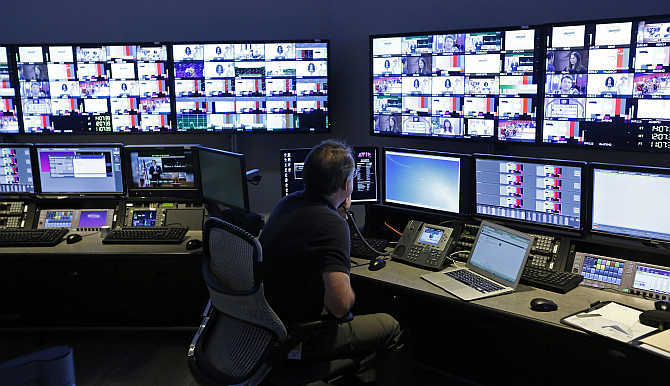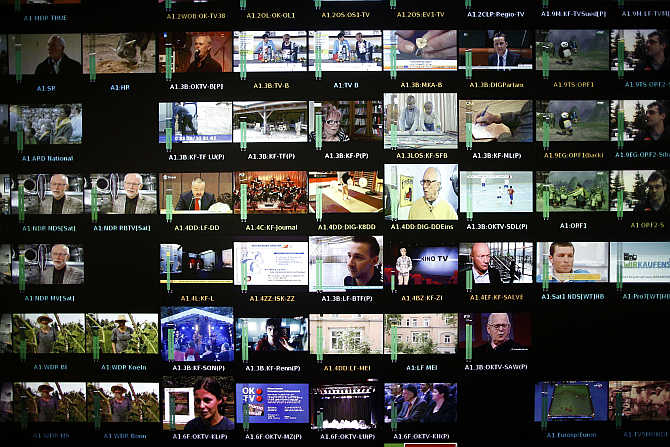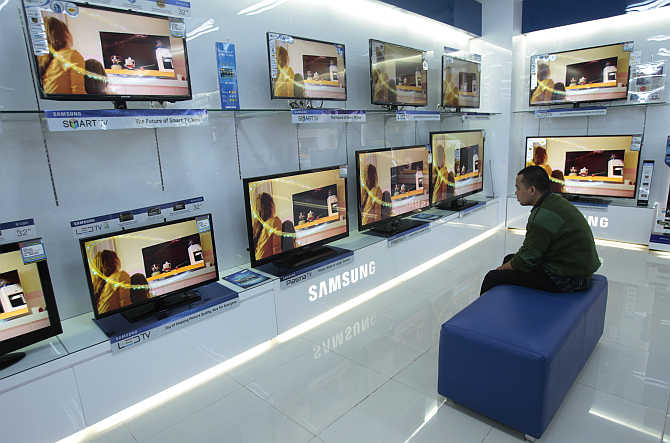
Two themes will dominate the business of media and entertainment in 2014 - digitisation and digital. But a third will generate the majority of the debates - ownership and regulation of news media. In the television industry, the largest chunk of the Rs 83,000-crore (Rs 830 billion) M&E business, digitisation, which is largely on schedule, will lead to better revenues, better margins and more choice.
That was the promise while the law was changed in 2011, making it mandatory to offer all television signals through a digital set-top-box. Going by Telecom Regulatory Authority of India data and on-ground reports, the top three metros are fully digital.
...

The next 38 towns are 75 per cent digital and will be fully so by the end of 2013. Much of this is already showing up on pay revenues, which have reportedly risen 15-20 per cent for most broadcasters. It is estimated this will add Rs 10,000-12,000 crore (Rs 100-120 billion) to television business revenue through the next five years.
More importantly, it is bringing much needed variety to television. The process has begun. For some of the biggest English shows, a day-date release in India is now found worthwhile. Most large broadcasters are launching second and third general entertainment channels - Life OK (from STAR), Zee Anmol or Sony Mix - as these segment the market better.
...

The boom in online entertainment is the second-biggest game changer in the business. Till even three years ago, it did not matter how many Indians went online, because advertisers hardly paid to reach them. Also, there were no pay revenues.
Now, as devices multiply, bandwidth improves and people spend more and more time online, the game has changed. Online advertising across laptops, mobiles, tablets et al, increased about 40 per cent in 2012 over 2011 compared to the single-digit growth of the overall market. So did users’ propensity to pay for streaming and downloading music and videos.
...

This will change the economics of the M&E sector much like it has in mature markets. At last count, about 227 million Indians were online, primarily looking for entertainment, news and sports. This is reflected in the crawling growth of the readership of English newspapers, many of which are losing young readers to the online world.
It is, however, the explosion in video consumption that is the single-most important trend in the online media world. In September 2013, the total number of people who watched videos online was just under eight per cent of those who watched TV, or more than 70 per cent of the 84 million people that walked into film theatres in 2012.
...

Almost every major broadcaster and film company is online, engaging with these people, offering legal content and trying to make money from it. The third aspect that will dominate discussions is dodgy media ownership. The financial implosion of Tehelka happened because of its editor’s alleged sexual assault on a colleague.
Similar stories are waiting to blow up if the whole issue of dodgy ownership is not tackled. How it could be tackled or who will have the political will and executive muscle to do it is moot.